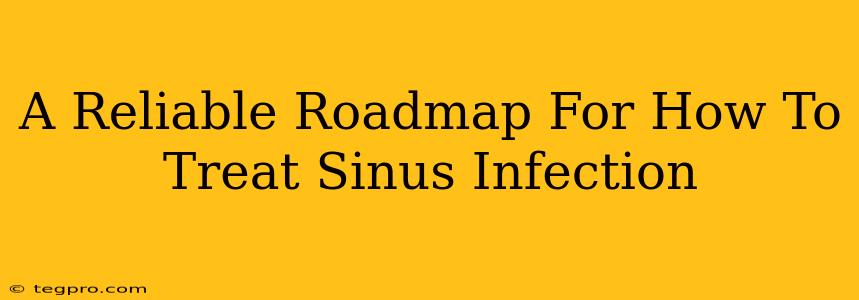Sinus infections, or sinusitis, are a common ailment causing discomfort and frustration. That stuffy nose, throbbing headache, and persistent facial pain are enough to make anyone miserable. But don't despair! This roadmap will guide you through reliable ways to treat your sinus infection and get you back to feeling your best. We'll cover both home remedies and when it's time to seek professional medical help.
Understanding Your Sinus Infection
Before diving into treatments, it's important to understand what's going on. Sinusitis occurs when the cavities (sinuses) around your nose and cheeks become inflamed and infected, usually due to a viral, bacterial, or fungal infection. Knowing the cause can help determine the best course of action.
Common Symptoms of Sinusitis:
- Facial pain and pressure: This is often the most noticeable symptom, feeling like a dull ache or throbbing in your cheeks, forehead, or around your eyes.
- Congestion: A stuffy nose is a hallmark of sinusitis, making breathing difficult.
- Headache: Sinus headaches are often accompanied by facial pain and pressure.
- Thick, colored mucus: The discharge from your nose might be yellow, green, or even brown.
- Reduced sense of smell and taste: This can significantly impact your enjoyment of food.
- Cough: Post-nasal drip, a common symptom of sinusitis, can trigger a cough.
- Fever: While not always present, a fever can indicate a more severe infection.
Home Remedies for Sinus Infection Relief
Many cases of sinusitis can be managed effectively with home remedies. These methods help alleviate symptoms and support your body's natural healing process.
Hydration is Key:
Drinking plenty of fluids, especially water, helps thin the mucus, making it easier to drain. Aim for at least eight glasses of water a day.
Saline Nasal Rinse:
A saline nasal rinse (using a neti pot or squeeze bottle) can gently cleanse your nasal passages, removing mucus and irritants. Use distilled or sterile water to avoid introducing harmful bacteria.
Steam Inhalation:
Inhaling steam from a bowl of hot water (with added essential oils like eucalyptus or peppermint, if desired) can help loosen congestion and ease breathing. Be cautious not to burn yourself.
Warm Compress:
Applying a warm, damp cloth to your forehead and sinuses can provide soothing relief from pain and pressure.
Over-the-Counter (OTC) Medications:
Pain relievers like ibuprofen or acetaminophen can help manage headache and facial pain. Decongestants (oral or nasal sprays) can temporarily relieve stuffiness, but it's crucial to use them as directed and not for extended periods to avoid rebound congestion.
When to See a Doctor
While home remedies are effective for many, some situations require professional medical attention. Seek medical help if:
- Your symptoms last for more than 10 days without improvement.
- You experience severe pain or high fever.
- You have difficulty breathing.
- You notice unusual or foul-smelling mucus.
- You have a weakened immune system.
Preventing Future Sinus Infections
Taking proactive steps can help reduce your risk of developing sinusitis. These preventative measures include:
- Avoid allergens and irritants: Identify and minimize exposure to substances that trigger your allergies, like pollen, dust mites, and pet dander.
- Quit smoking: Smoking significantly increases your risk of respiratory infections.
- Manage allergies: Proper allergy management, including medication and avoidance strategies, can help prevent sinus infections.
- Practice good hygiene: Frequent handwashing can help prevent the spread of infection.
This roadmap provides a comprehensive overview of how to treat a sinus infection. Remember, while home remedies can offer significant relief, it's crucial to consult a healthcare professional for persistent or severe symptoms. Your health is paramount, so don't hesitate to seek medical advice when needed.

